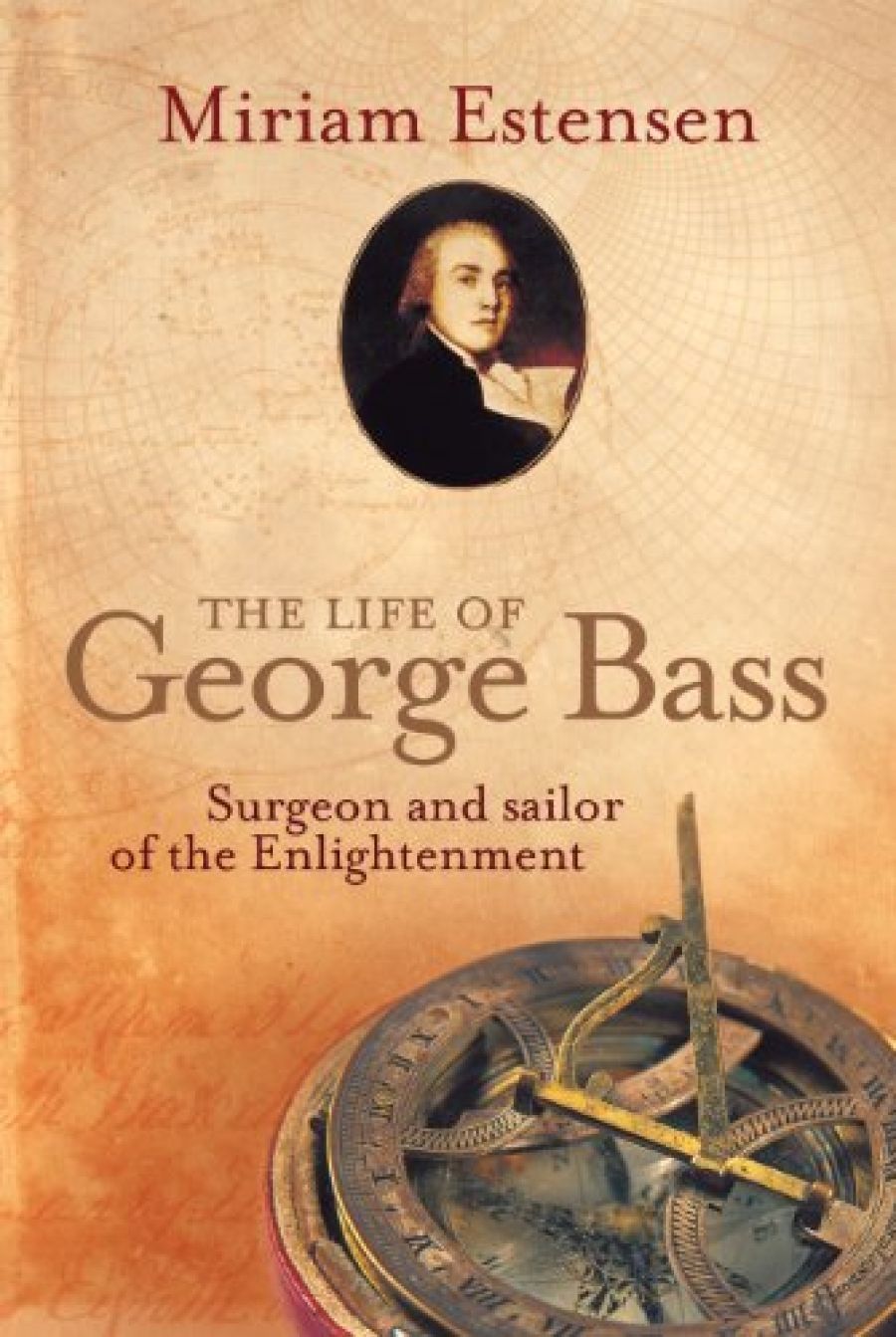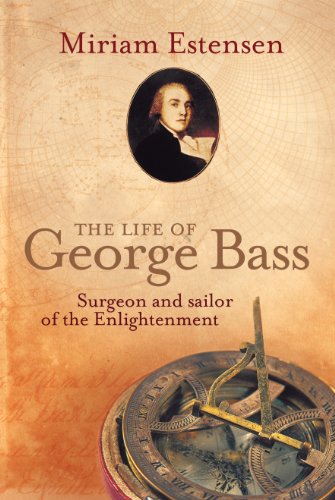
- Free Article: No
- Contents Category: Biography
- Review Article: Yes
- Article Title: Clear of the world
- Online Only: No
- Custom Highlight Text:
The only surviving image of George Bass is surrounded by as much mystery as his death. It is a photograph of a painting that has now disappeared, thought to have been painted in about 1800. A handsome young man looks straight out at the viewer, with a faintly supercilious smirk. His hair is tied back and perhaps powdered – old-fashioned, I would have thought, for a young man in 1800, when Bass was only twenty-nine. Bass is known to every eastern-states schoolchild as half of Bass and Flinders, famous for their exploits in Tom Thumb – actually two different small open boats in which they explored the south coast of New South Wales at different times. Matthew Flinders proposed that Bass Strait be so named because it was Bass’s 1797–98 voyage in a whaleboat that had convinced him that it must be a strait rather than a bay, and led to their circumnavigation of Tasmania in the Norfolk, in 1798–99.
- Book 1 Title: The Life of George Bass
- Book 1 Subtitle: Surgeon and sailor of the enlightenment
- Book 1 Biblio: Allen & Unwin, $49.95 hb, 259 pp, 1741141303
- Book 1 Cover Small (400 x 600):

- Book 1 Cover (800 x 1200):

Miriam Estensen, having produced a landmark biography of Flinders in 2002, has now tackled the rather more enigmatic Bass. With less to work on, The Life of George Bass is a smaller and less satisfying book.
Flinders, of course, went on to greater things – and lasting fame – while Bass found exploration fun though unrewarding. A navy surgeon’s pay was £4 per month, before deductions, and all Bass received for his extraordinary efforts was a grant of land at Banks Town, which, although worth many millions today, was of no use to him. It eventually reverted to the Crown. Bass arranged to take an extended ‘sickie’ from the Navy and set out to be a trader. Modern employers would be less willing to allow a patently healthy and active individual like Bass to stay on sick leave (on half pay) for three years, but the Navy seemed to be willing to go along with it. Perhaps it was some kind of reward for his services.
In 1800, during a brief stay in England, he met and married Elizabeth Waterhouse. After a three-month honeymoon, he sailed for Port Jackson again to earn enough to become ‘clear of the world’ – an expression Flinders also used – so that they would never have to part again. Neither he nor Flinders succeeded in this modest enough ambition: to be able to live for long with their wives in reasonable comfort was, it seems, too much for either of them to expect. But then, the call of the sea was strong. It seems that Bass only became a surgeon with the intention of joining the Navy, and he always saw himself as having ‘two professions, I am a sailor as well as a surgeon’. In 1798 he announced to his mother that he was capable ‘of navigating and conducting a ship to any part of the world’. A naval surgeon had no need to learn navigation, and Bass first went to sea at the late age of eighteen, so he was self-taught in this as in many of his other accomplishments. He was good at languages, studying them whenever he judged they could be of use. He dabbled in the infant science of geology and in natural history: he was the first scientifically to describe the wombat. His letters show him to possess wit and supreme self-confidence.
Along with this keen intelligence, however, Bass could be hurtful and contemptuous, even towards his closest friends. Flinders – younger, shorter and less well-educated, though far from stupid – hero-worshipped Bass and, in a letter he wrote in 1800, complained of the ‘unpleasant manner you took to point out my failings’. Estensen, while extolling his intellectual qualities and personal courage, never claims that Bass was kind or thoughtful. ‘He was devoted to his mother and in love with his wife’, but ‘impatient of ignorance and sharply critical of what he called “insipidity”.’ He tended to overawe people, and then despised them for their admiration. In a letter to his wife in 1802, he wrote that he was ‘getting smoothened down with a drenching of P. Pinders Oil of Fool administered by the hand of M Baudin the French Commodore who is collecting curiosities for the national Museum & has threatened me with a niche in the Glass Case’.
Although Estensen followed up every rumour, there is no trace of Bass, his crew or his brig Venus after they left Sydney to trade in the Pacific on 5 February 1803. A collection of letters from Elizabeth’s family is in the Mitchell Library, but other sources for Bass’s biography are frustratingly scarce, and Estensen’s text is peppered with modifiers such as ‘evidently’, ‘probably’, and ‘it seems likely that’. Scrupulously researched and ably written, The Life of George Bass, though not a compulsive read, is a solid contribution to Australian history.


Comments powered by CComment